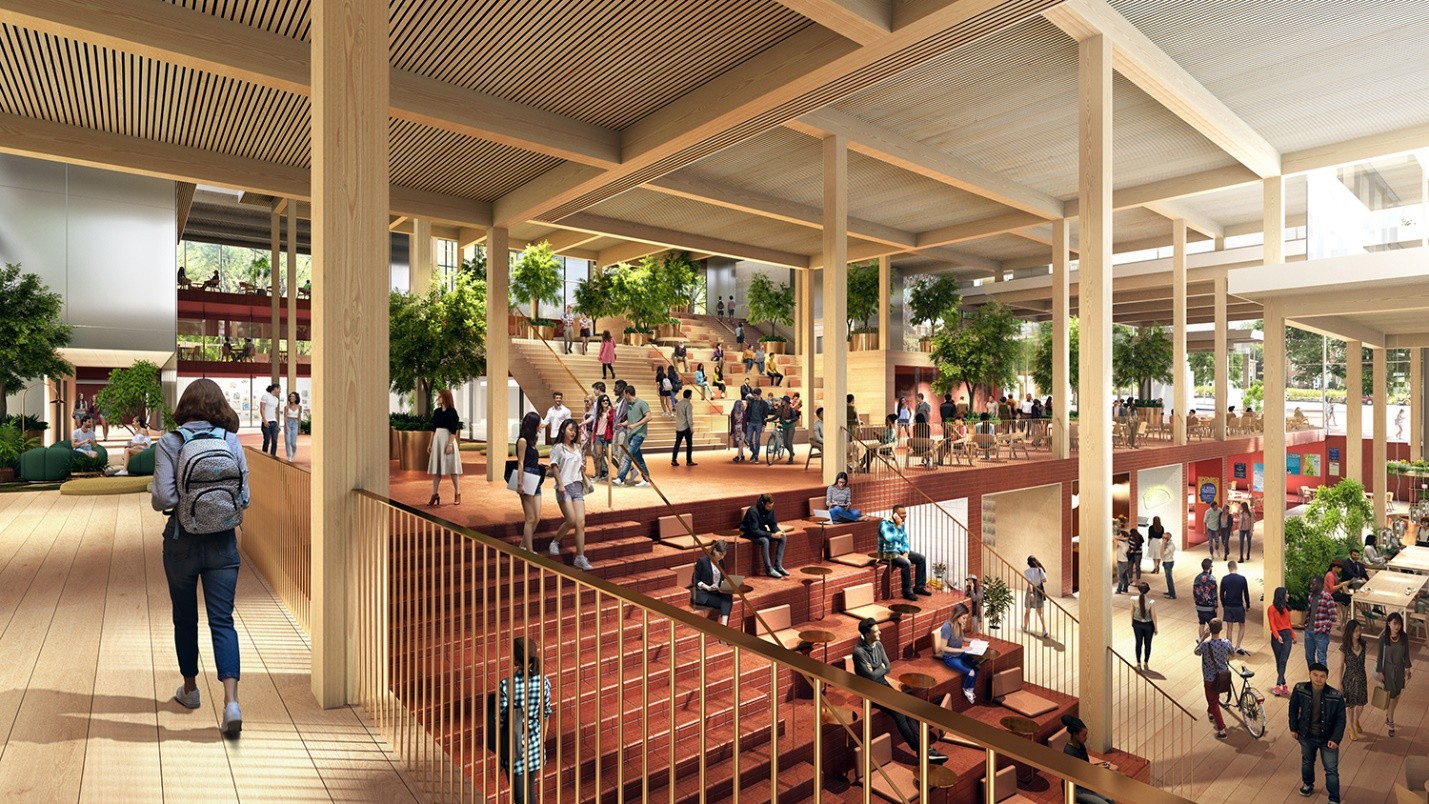Following an architecture competition, Bjarke Ingels Group (BIG) has been commissioned to design a new student center for Johns Hopkins University, in Baltimore, Maryland. Named The Village, it’s conceived as an oversized living room and will consist of a timber structure and feature a roof that’s covered in solar panels.
The Village (aka The Hopkins Student Center) will be located near an existing open space on the Johns Hopkins campus and is designed to improve access between the wider campus and the neighboring Charles Village community. It will measure roughly 150,000 sq ft (14,000 sq m) and include spaces for relaxation and socialization, as well as creative and performing arts spaces, student resources, lounges, a digital media center, a performance space, and a dining hall that connects to a new plaza.
“The facility will satisfy the long-acknowledged need for a true non-academic gathering spot on the university’s Homewood campus in Baltimore, Maryland,” explains BIG. “The Village is conceived as a central living room surrounded by a collection of spaces tailored to the needs of the Hopkins community. The building negotiates the sloping grade of the site to allow direct entry from all four levels of the building, while maintaining a friendly human scale and providing several accessible routes across the site. Arriving on Charles Street, students and visitors are greeted by an open building facade with dining areas spilling out onto a sun-splashed plaza. The entrance of The Village opens into a cascading interior landscape of dining, performance, lounging, and socializing.”

BJarke Ingels Group
The building will be predominantly constructed from timber and, in addition to its generous glazing, light will also spill in between its roof-based solar panels, reducing the building’s artificial lighting needs. We’ve no hard figures yet on the solar panel capacity at this early stage, but renders show the panels covering the building’s large stepped roof, suggesting a significant part of its electricity needs will be met by them.
The project is set to begin construction in early 2022 and to be completed by late 2024. BIG is collaborating with Shepley Bulfinch as Architect of Record, along with Rockwell Group for interior design and Michael Van Valkenburg Associates for landscape design.
It’s the firm’s third academic building in the United States, following the Isenberg School of Management Business Innovation Hub and The Heights, both completed in 2019.
Source: BIG
Source of Article